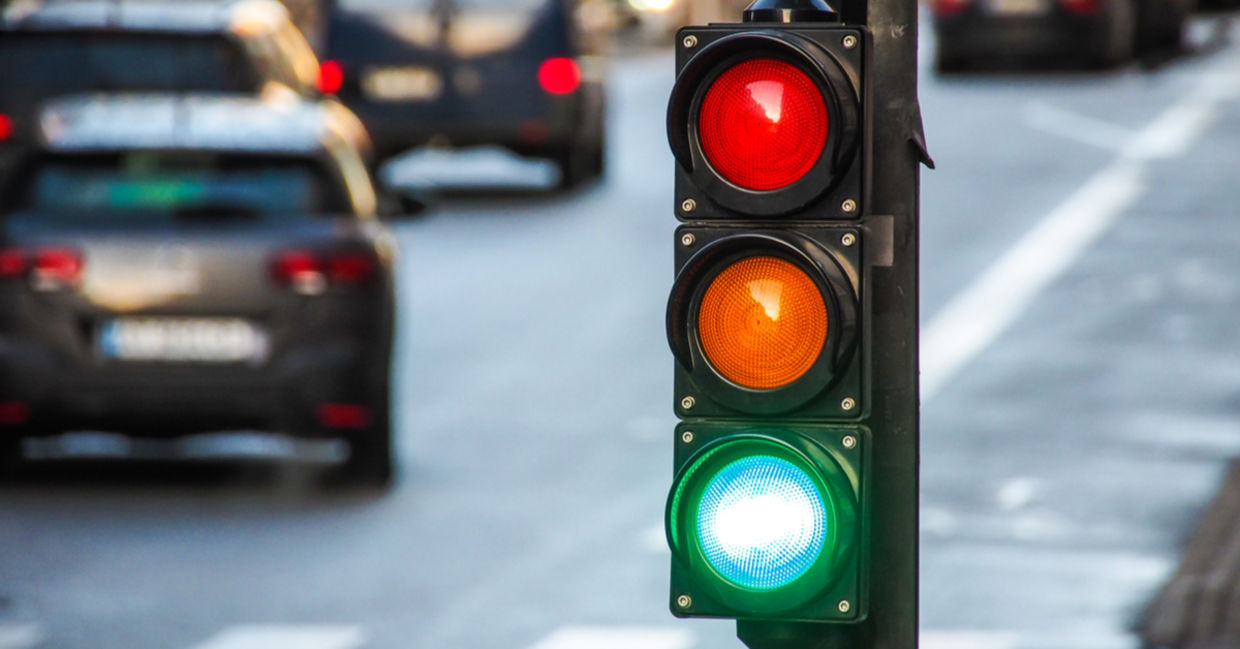
(Radowitz / Shutterstock.com)
Every driver loves sailing through a series of green lights without having to stop and wait at a traffic light. Now, thanks to artificial intelligence, German researchers have found a way to reduce time spent at intersections, according to Extreme Tech.
This innovation is now being tested in the small German town of Lemgo with exciting results. Called the KI4LSA project, and funded by the Ministry of Transport and Digital Infrastructure, scientists first studied algorithms taken from a busy intersection to learn about traffic patterns and where improvements were most needed.
There is a great necessity to speed up waiting times at intersections as conventional methods are inflexible and cannot interpret all traffic flow patterns, according to a press release by the Fraunhofer Institute.
Interpreting traffic in real-time
The new AI method uses radar sensors and high-resolution cameras to interpret traffic patterns in real-time. They can determine the speed of traffic as well as waiting times and combine this with self-learning algorithms. They are currently trying this out at a busy intersection in Lemgo with encouraging results.
The intelligent lights are said to improve traffic flow by 10 to 15 percent, which results in money saved; the EU estimates that traffic jams create economic damage that adds up to 100 billion euros a year, according to the press release. Aside from reducing commuting time, these traffic lights will reduce noise and CO2 emissions from cars idling at intersections.
Another exciting development in this research is the K14PED project, which studies pedestrians crossing intersections. Using AI, researchers can ascertain how many people are waiting at a pedestrian crossing and whether some of these people will need extra time to cross the street, reported Car Scoops. Using a 3D points cloud, they can tell if someone has disabilities or is elderly without identifying the individual.
Longer crossing times for pedestrians with special needs
since pedestrian buttons that are presently at intersections cannot determine if some people have special needs or are elderly, this is a real win. Such a needs-based system could reduce pedestrian waiting time by 30 percent, according to the press release, which could then decrease jaywalking by 25 percent.
Testing will be done until the summer of 2022 in the German towns of Lemgo and Bielefeld, with researchers optimistic that it will be adopted abroad. “We are the first team in the world to test deep reinforcement learning for traffic light control under real-world conditions. And we hope that our project will inspire others to similar endeavors.” Scientist Arthur Müller told Fraunhofer.
This technology is exciting news for pedestrians and drivers alike. It encourages safety, protects the environment, and may even give you more time to enjoy your morning coffee before heading off to work!
YOU MIGHT ALSO LIKE:
Miami Rewards Residents For Leaving Their Cars at Home
Belgian Capital Offers Free Transportation to Cut Pollution
This New Pavement Spray Could Bring TLC to Cities!







